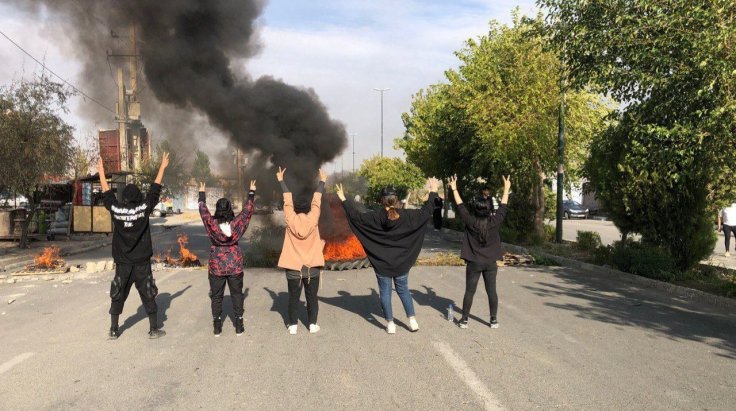At least eight more protesters were killed by the Iranian security forces since Wednesday night Tehran's crackdown on the anti-hijab protests across the country continued, according to human rights group Amnesty International.
Thousands of protesters had gathered near the grave of Mahsa Amini, the Kurdish woman who dies in custody after being arrested on September 13 for allegedly wearing the hijab improperly, to mark 40 days since her death.
The 40th day
The 40th day of mourning is of cultural significance for Iranians. Amini died on September 16, just days after she was arrested by the Iran's so-called morality police for inappropriate hijab. Her death ignited widespread anti-government protests across Iran. Solidarity rallies have also been held in Europe and the U.S.

But the Iranian police continued with its hard approach, they fired on protesters in Saqqez, the home city of Mahsa Amini. Witnesses say officers fired live rounds and tear gas at the crowds. Security officers were also deployed in the city and other parts of the Kurdistan province as fresh demonstrations are anticipated.
Protest Will Evolve into a Revolution
This is the sixth week of Iran's uprising as protesters call for the Iran regime's downfall. "We will fight, we will die, we will take back Iran," the protesters chanted. "Woman, life, freedom" and "death to the dictator" are two of the signature chants of the protest movement. It also includes "down with traitors" and "Kurdistan will be the graveyard of fascist". The Iranian government deployed the Islamic Revolutionary Guard Corp's (IRGC) volunteer militia, the Basij, to quell the demonstrations, alongside regular law enforcement, riot police and plainclothers officers.
A huge crowd of protesters marches in Isfahan city centre chanting "We will fight, we will die, we will take back Iran" on a night of mass protests across Iran marking 40 days since the death of #MahsaAmini.#مهسا_امینیpic.twitter.com/zs7D8L1nlg
— Shayan Sardarizadeh (@Shayan86) October 27, 2022
Ali Alfoneh, a senior fellow at the Arab Gulf States Institute in Washington, believes the protesters are incapable of overthrowing the regime, and the regime is incapable of forcing people to go home. He said the longer the protest goes and the larger it becomes, more pressure will grow on the Revolutionary Guard to lead the crackdown. However, each cycle of violence erodes the legitimacy of the IRGC in the eyes of the Iranian public. Till date, more than 200 protesters have been killed and thousands more injured and arrested in the government crackdown. Moreover, the Iranian government has censored its media and internet has been cut off time and again to restrict reportage and quell protests.

Strongest Day of Protests
Marking the 40 days of mourning, protests in Tehran and other major cities gained momentum on Wednesday, and became more intense in the evening. Going through the posts and videos uploaded on the social media, Wednesday could perhaps be the strongest day of demonstrations so far. There have been reports of workers at Tehran's refinery going on a strike to join the protest movement; students in Karaj and Shiraz universities staged protests, and chanted "Woman, Life, Freedom" and "We don't want bystanders, join us!"
The burial ceremony of Ismaeil Mauludi (Smko) at #Mahabad Cemetery. People are chanting: "Kurdistan #Kurdistan, The fascists' graveyard", "Martyr does not die" "Down with Khamenei".
— Hengaw Organization for Human Rights (@Hengaw_English) October 27, 2022
Thursday, October 27#MahsaAmini#ZhinaAminipic.twitter.com/vbSgcw6ZEr
In the United States, Iranians in Los Angeles formed a slow-moving procession along blocks of a closed downtown street. They chanted for the fall of Iran's government and waved Iranian flags. Shooka Scharm, an attorney who was born in the U.S after her parents fled the Iranian revolution, said women can be arrested for wearing the wrong makeup color, historically important women are omitted from books and they have few rights in matters such as divorce and child custody. "Iranian women are standing up to unbelievable odds for basic human rights."
Similar protests were held in Germany, France and the Netherlands.









